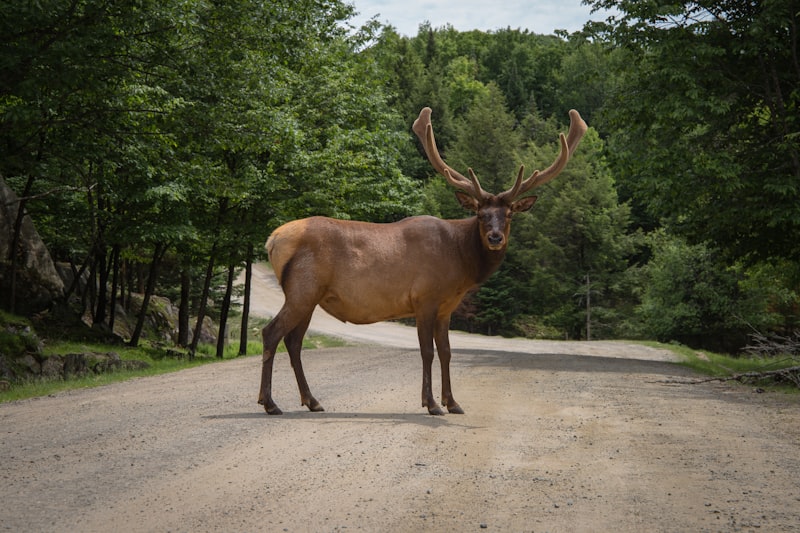Mythical animals have captivated human imagination for centuries, blending reality with folklore to create creatures both awe-inspiring and mysterious. These fantastical beings, often the subjects of ancient tales and modern fantasies alike, continue to intrigue us with their unique traits and mythical significance.
One of the most iconic mythical animals is the phoenix, a symbol of renewal and rebirth. According to legend, the phoenix rises from its own ashes, symbolizing immortality and resilience. This majestic bird has appeared in various cultures throughout history, each adding its own interpretation to its enduring myth.
Another legendary creature is the unicorn, renowned for its purity and grace. Often depicted as a horse with a single spiraling horn on its forehead, the unicorn symbolizes innocence and magic. Its elusive nature has sparked numerous quests in folklore, where it is said only the purest of heart can glimpse this mythical beast.
Dragons, with their fearsome appearance and formidable powers, are perhaps the most universally recognized mythical creatures. Found in myths across cultures from Europe to Asia, dragons symbolize power, wisdom, and often guard great treasures. These creatures vary greatly in appearance and abilities, ranging from benevolent guardians to malevolent beasts.
Mermaids, half-human and half-fish, dwell in the depths of oceans and seas in many maritime legends. Known for their enchanting beauty and haunting melodies, mermaids are both alluring and dangerous, capable of luring sailors to their fates. These mythical beings have inspired countless tales of maritime adventures and forbidden love stories.
Centuries-old tales of griffins, creatures with the body of a lion and the head and wings of an eagle, evoke images of strength and majesty. Griffins were believed to guard treasures and protect against evil, making them symbols of both ferocity and nobility in ancient mythology.
Mythical animals continue to capture our imagination, reminding us of the enduring power of storytelling and the human desire to explore the realms of fantasy. Whether as symbols of courage, wisdom, or mystery, these creatures enrich our cultural heritage and continue to inspire wonder in the modern world.
Unveiling the Mystique: Little-Known Facts About Mythical Beasts
Ever wondered about the mesmerizing world of mythical beasts that have captured human imagination for centuries? These legendary creatures, often portrayed in folklore and literature, continue to fascinate us with their mysterious allure. Let’s dive into some intriguing facts about these fantastical beings that you might not have known before.

Dragons, perhaps the most iconic of all mythical creatures, are often depicted as fearsome, fire-breathing creatures with scales and claws. However, did you know that dragons are also revered in some cultures as wise and benevolent beings? In Eastern mythology, dragons symbolize power, luck, and strength, contrasting with their Western counterparts.
Moving to the sea, the majestic Kraken is a legendary giant squid-like creature said to dwell off the coasts of Norway and Greenland. This enormous beast, capable of capsizing ships with its tentacles, has sparked numerous tales of sailors encountering its wrath in stormy waters.
Unicorns, with their single spiraling horn atop their heads, symbolize purity and grace. These elusive creatures have been depicted in various cultures as symbols of beauty and enchantment. Despite their mythical status, some historical accounts suggest that early European explorers mistook rhinoceroses for unicorns due to their similar horn-like structures.
In Greek mythology, the Phoenix is a mythical bird that cyclically regenerates or is otherwise born again. It’s said to burst into flames upon death and then emerge from its own ashes, symbolizing renewal and immortality. This mystical bird’s vivid imagery has inspired countless stories of rebirth and transformation.
Centaur, a creature with the upper body of a human and the lower body and legs of a horse, embodies duality in mythology. Often depicted as wise scholars and skilled warriors, centaurs blur the lines between human intellect and animal instinct, symbolizing the struggle between civilization and nature.
Mythical beasts continue to enchant us with their symbolism and allegorical meanings, resonating deeply in art, literature, and popular culture. Whether they inspire awe or fear, these creatures remind us of humanity’s timeless fascination with the unknown and our eternal quest for understanding the world around us.
Mythical Menagerie: Exploring the Origins and Legends of Fantastic Creatures
Welcome to the world of mythical creatures, where legends intertwine with reality, creating a tapestry of wonder and fascination. From the majestic dragons that soar across ancient skies to the elusive unicorns believed to possess magical healing powers, these creatures have captivated human imagination for centuries.
Dragons, often depicted as fearsome reptilian beasts with scales as strong as steel and breath that can unleash firestorms, have roots in cultures worldwide. In Chinese mythology, dragons symbolize power, strength, and good fortune, guarding sacred treasures and bringing rain to nourish the land. Meanwhile, European folklore portrays dragons as formidable adversaries to knights and heroes, guarding hoards of gold in deep, cavernous lairs.
Unicorns, on the other hand, embody purity and grace. These solitary creatures, with their single spiraling horn, are said to be elusive and difficult to capture. In medieval times, the unicorn’s horn was believed to possess the ability to purify water and cure sickness, making it a symbol of healing and virtue.
Centuries-old tales of mermaids, half-human and half-fish beings, continue to enchant sailors and land-dwellers alike. These enchanting creatures, with their melodious voices and mesmerizing beauty, are said to reside deep beneath the ocean’s waves, luring sailors with promises of love and fortune.
The legendary phoenix, a bird of flames and rebirth, is another mythical marvel. According to ancient texts, the phoenix cyclically regenerates or is otherwise born again, rising from the ashes of its predecessor. This symbol of renewal and resurrection has inspired countless stories of hope and endurance across cultures.
As we delve deeper into the realm of mythical creatures, we uncover not just fantastical beings but also reflections of human beliefs, fears, and aspirations. These creatures, born from oral traditions and ancient texts, continue to evolve in contemporary literature, art, and popular culture, reminding us of the enduring power of imagination.
Join us on a journey through the mythical menagerie, where each creature tells a story of its own, weaving together a rich tapestry of legends and wonder.
Beyond Imagination: Surprising Traits of Legendary Beings Revealed
Legends have always captivated our imaginations, weaving tales of heroic feats and mysterious powers. But what if these legendary beings possess traits that defy our wildest dreams? Dive into the realm of myth and discover the surprising facets of these iconic figures.
Imagine dragons, those majestic creatures of fire and scale. Beyond their fearsome appearance, dragons in various cultures are often depicted as wise guardians or symbols of power. Their ability to breathe fire symbolizes both destruction and renewal, echoing the duality of their nature.
Then there are the elusive mermaids, creatures of the deep seas. Contrary to popular belief, mermaids aren’t just beautiful maidens with fishtails; they embody a mysterious allure and an intimate connection to the ocean’s secrets. Legends tell of their mesmerizing songs that can either enchant sailors or guide them to perilous depths.
Moving to the realm of gods and goddesses, figures like Zeus and Athena from Greek mythology exemplify extraordinary qualities. Zeus, the king of gods, embodies strength and authority, yet his complex relationships and unpredictable nature reveal layers of human-like emotions. Athena, goddess of wisdom and war, embodies strategic intellect and valor, contrasting her divine origins with mortal-like wisdom.
These legendary beings transcend mere stories; they embody universal themes of power, wisdom, and the eternal struggle between darkness and light. Their tales inspire awe and reflection, prompting us to ponder the depths of human imagination and the timeless quest for meaning in our own lives.
Explore these legendary beings with a new perspective, and uncover the surprising traits that continue to fascinate and resonate across cultures and centuries.
Myth vs Reality: Scientific Explanations Behind Mythical Animal Lore

Dragons, unicorns, and mermaids have captured human imagination for centuries, but are they just figments of storytelling or could they have a basis in reality? Mythical animals often embody qualities that humans find both awe-inspiring and terrifying. Take dragons, for instance. These fire-breathing giants of folklore were believed to terrorize villages and hoard treasures. While no fire-breathing lizards exist, some scholars suggest ancient discoveries of dinosaur bones could have inspired dragon tales.
Unicorns, those elusive creatures with a single spiraling horn, have been revered for their purity and grace. In reality, the unicorn may have roots in early accounts of rhinoceroses or even the Arabian oryx, a white antelope with two straight horns that when seen from the side can appear as one.
Mermaids, half-human, half-fish beings, often depicted as luring sailors to their doom with their enchanting songs, could be a blend of sailor’s loneliness and sightings of manatees or dugongs. These gentle marine mammals, often mistaken for humanoid creatures from a distance, might have sparked tales of mermaids in seafarers’ stories.
Centuries ago, without modern science to explain the world’s mysteries, mythical creatures served to fill gaps in understanding and convey moral lessons. Today, as science advances, we can unravel the origins of these myths. Yet, the allure of mythical creatures persists, inspiring movies, books, and art that keep their legends alive.
Frequently Asked Questions
What are mythical animals and where do they originate?
Explore the origins and characteristics of mythical animals from various cultures around the world. Learn about the rich folklore and historical contexts that gave rise to these legendary creatures.
What are some unique abilities and characteristics of mythical animals?
Explore the fascinating world of mythical animals and uncover their unique abilities and characteristics. From the majestic wings of the griffin to the fire-breathing prowess of dragons, these creatures captivate with their extraordinary powers and traits.
What are some famous mythical animals from different cultures?
Explore famous mythical animals from diverse cultures worldwide. Learn about legendary creatures like the dragon from Chinese folklore, the phoenix of ancient Egypt, the kraken in Norse mythology, and the kitsune from Japanese legends. Discover their origins, symbolism, and enduring cultural significance.
Are there any real-life inspirations behind mythical creatures?
Discover the real-life inspirations that have sparked mythical creatures throughout history.
How do mythical animals influence modern culture and literature?
Explore the impact of mythical animals on modern culture and literature, detailing their role in inspiring imagination, storytelling, and symbolism across various mediums.


